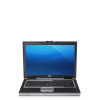Dell Latitude D620 ATG User's Guide - Page 32
DVD+RW drive
 |
View all Dell Latitude D620 ATG manuals
Add to My Manuals
Save this manual to your list of manuals |
Page 32 highlights
over. CD-RW - CD rewritable - A rewritable version of a CD. Data can be written to a CD-RW disc, and then erased and written over (rewritten). CD-RW drive - A drive that can read CDs and write to CD-RW (rewritable CDs) and CD-R (recordable CDs) discs. You can write to CD-RW discs multiple times, but you can write to CD-R discs only once. CD-RW/DVD drive - A drive, sometimes referred to as a combo drive, that can read CDs and DVDs and write to CD-RW (rewritable CDs) and CD-R (recordable CDs) discs. You can write to CD-RW discs multiple times, but you can write to CD-R discs only once. clock speed - The speed, given in MHz, that indicates how fast computer components that are connected to the system bus operate. COA - Certificate of Authenticity - The Windows alpha-numeric code located on a sticker on your computer. Also referred to as the Product Key or Product ID. Control Panel - A Windows utility that allows you to modify operating system and hardware settings, such as display settings. controller - A chip that controls the transfer of data between the processor and memory or between the processor and devices. CRIMM - continuity rambus in-line memory module - A special module that has no memory chips and is used to fill unused RIMM slots. cursor - The marker on a display or screen that shows where the next keyboard, touch pad, or mouse action will occur. It often is a blinking solid line, an underline character, or a small arrow. D DDR SDRAM - double-data-rate SDRAM - A type of SDRAM that doubles the data burst cycle, improving system performance. DDR2 SDRAM - double-data-rate 2 SDRAM - A type of DDR SDRAM that uses a 4-bit prefetch and other architectural changes to boost memory speed to over 400 MHz. device - Hardware such as a disk drive, printer, or keyboard that is installed in or connected to your computer. device driver - See driver. DIMM - dual in-line memory module - A circuit board with memory chips that connects to a memory module on the system board. DIN connector - A round, six-pin connector that conforms to DIN (Deutsche Industrie-Norm) standards; it is typically used to connect PS/2 keyboard or mouse cable connectors. disk striping - A technique for spreading data over multiple disk drives. Disk striping can speed up operations that retrieve data from disk storage. Computers that use disk striping generally allow the user to select the data unit size or stripe width. DMA - direct memory access - A channel that allows certain types of data transfer between RAM and a device to bypass the processor. docking device - See APR. DMTF - Distributed Management Task Force - A consortium of hardware and software companies who develop management standards for distributed desktop, network, enterprise, and Internet environments. domain - A group of computers, programs, and devices on a network that are administered as a unit with common rules and procedures for use by a specific group of users. A user logs on to the domain to gain access to the resources. DRAM - dynamic random-access memory - Memory that stores information in integrated circuits containing capacitors. driver - Software that allows the operating system to control a device such as a printer. Many devices do not work properly if the correct driver is not installed in the computer. DSL - Digital Subscriber Line - A technology that provides a constant, high-speed Internet connection through an analog telephone line. dual-core - An Intel® technology in which two physical computational units exist inside a single processor package, thereby increasing computing efficiency and multi-tasking ability. dual display mode - A display setting that allows you to use a second monitor as an extension of your display. Also referred to as extended display mode. DVD-R - DVD recordable - A recordable version of a DVD. Data can be recorded only once onto a DVD-R. Once recorded, the data cannot be erased or written over. DVD+RW - DVD rewritable - A rewritable version of a DVD. Data can be written to a DVD+RW disc, and then erased and written over (rewritten). (DVD+RW technology is different from DVD-RW technology.) DVD+RW drive - drive that can read DVDs and most CD media and write to DVD+RW (rewritable DVDs) discs. DVI - digital video interface - A standard for digital transmission between a computer and a digital video display. E ECC - error checking and correction - A type of memory that includes special circuitry for testing the accuracy of data as it passes in and out of memory. ECP - extended capabilities port - A parallel connector design that provides improved bidirectional data transmission. Similar to EPP, ECP uses direct memory access to transfer data and often improves performance.















